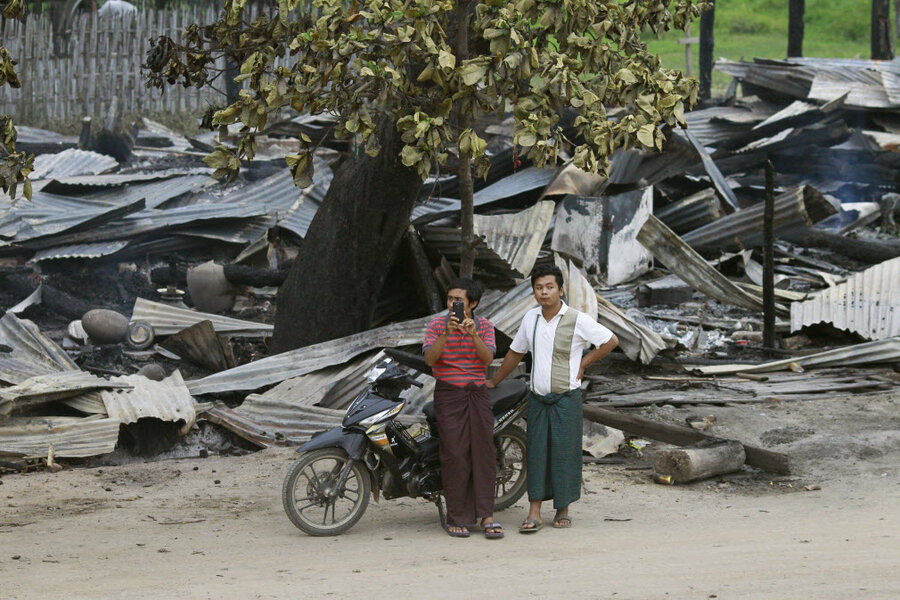Buddhist mob torches more Muslim homes in Myanmar
Loading...
| Htan Gone, Myanmar
Members of a 1,000-strong Buddhist mob torched dozens of homes and shops in northwestern Myanmar following rumors that a Muslim man tried to sexually assault a young woman, officials and witnesses said Sunday, as the country was once again gripped by sectarian violence.
The rioters, who sang the country's national anthem as they rampaged, dispersed after security forces arrived early Sunday, shooting into the air. No injuries were reported.
The hours-long riot in Htan Gone village, located 16 kilometers (10 miles) south of the town of Kantbalu in the region of Sagaing, began late Saturday after a crowd surrounded a police station, demanding that the suspect in the attempted assault be handed over, a police officer told The Associated Press. The officer requested anonymity because he did not have the authority to speak to reporters.
State television reported that about 42 houses and 15 shops were burned and destroyed – most belonging to Muslims.
The predominantly Buddhist nation of 60 million has been grappling with sectarian violence since the country's military rulers handed over power to a nominally civilian government in 2011.
The unrest – which has killed more than 250 people and left 140,000 others displaced – began last year in the western state of Rakhine, where nationalist Buddhists accuse the Rohingya Muslim community of illegally entering the country and encroaching on their land. The violence, on a smaller scale but still deadly, spread earlier this year to other parts of the country, fueling deep-seated prejudices against the Islamic minority and threatening Myanmar's fragile transition to democracy.
Almost all of the victims have been Muslims, often attacked as security forces stood by.
The Information Ministry said the latest round of violence was triggered by a report that a Muslim man attempted to sexually assault a Buddhist woman on her way home from work.
At its height, up to 1,000 people were rampaging through Htan Gone village, the ministry said.
"People descended on our village with swords and spears, and sang the national anthem and began destroying shops and burned houses," said Aung San, a 48-year-old Muslim man whose house was burned. "Police shouted at the mob to disperse, but did not take any serious action."
Aung San, who lives with his parents, who are in their 70s, said his family had to flee when the mob burned their house down.
"We hid my parents and two sisters in a cemetery before the mob burned our house, and we fled later," he said. He and his family were taking refuge Sunday at a Muslim school.
Myint Naing, an opposition lawmaker who represents constituents in Kantbalu, was outraged by the latest violence. He said Muslims and Buddhists have lived side-by-side in the area for many years.
"There is a mosque in almost every village in our township and we live a peaceful co-existence," he said as he headed to the scene, adding that at least one mosque was burned down in the violence.
"I cannot understand why the authorities were unable to control the crowd when it originally started," he said.







